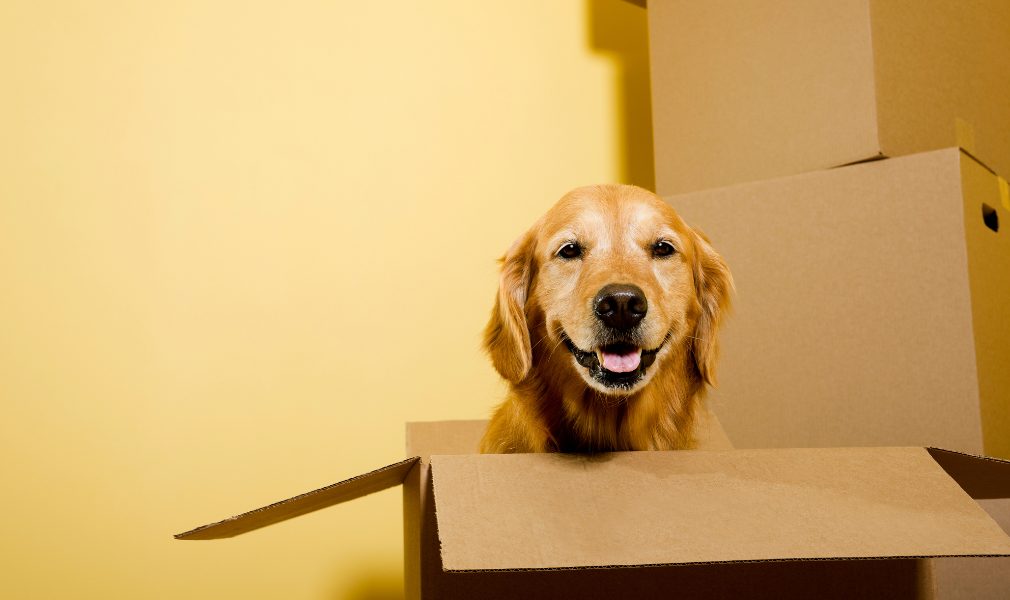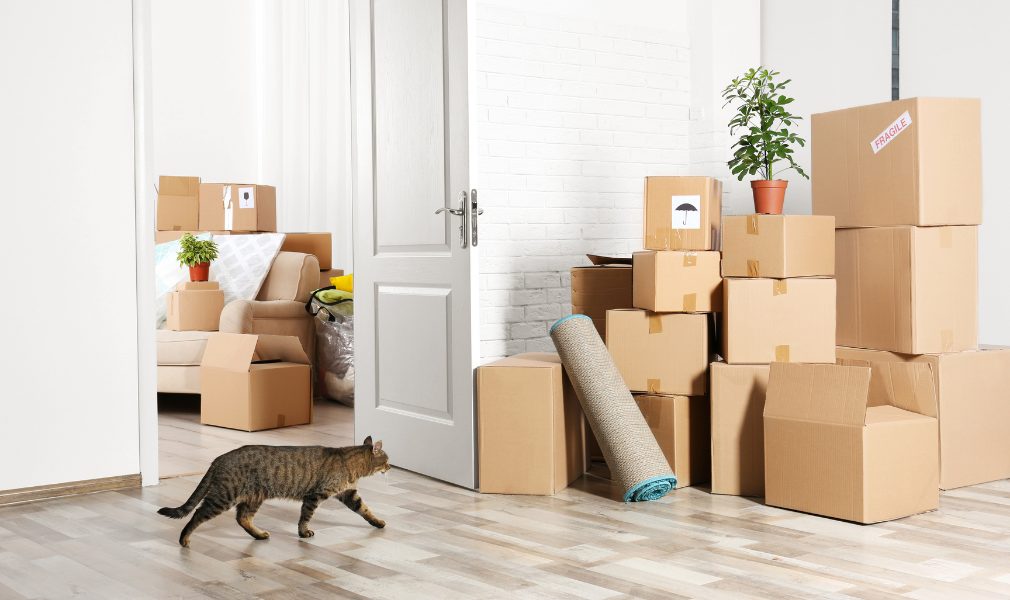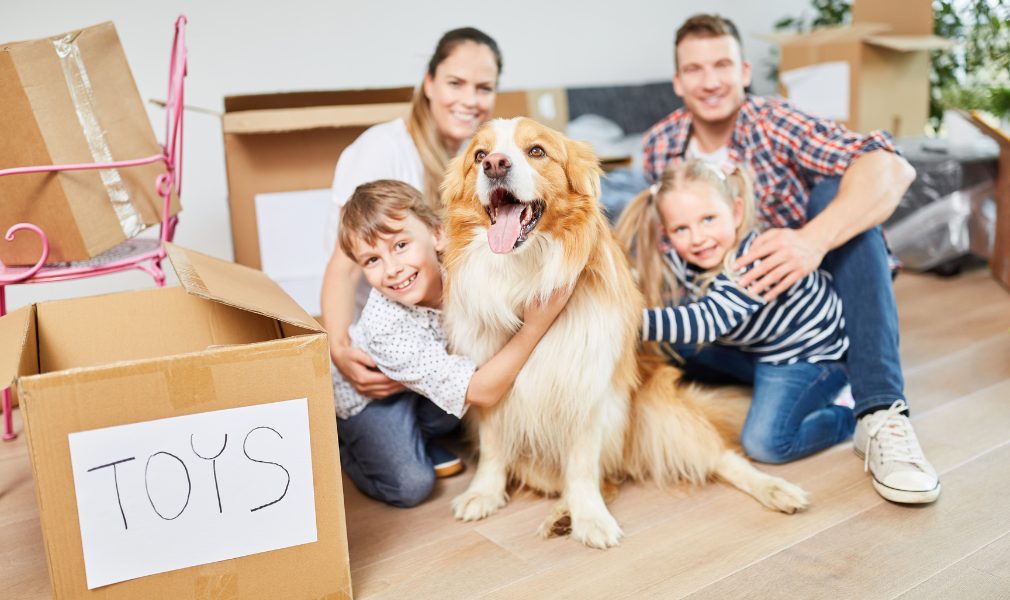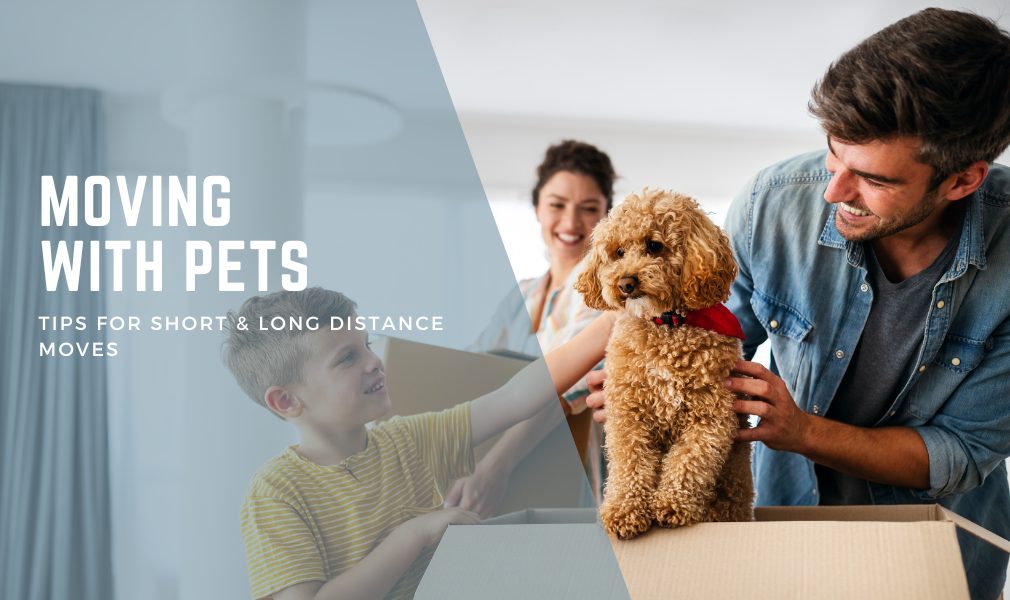Best Tips for Moving With Pets
Moving with pets is more than just packing their toys because they need to feel safe. Pets thrive on predictability, so moves can make them feel insecure and nervous. All the boxes, new people in the house, and the changes feel like chaos to your pet. Pack their possessions last and unpack them first to put them at ease. Keep their favorite treats, water, and their bedding accessible throughout the move when possible. Plan to transport them in a familiar, secure carrier, and after you arrive, let them explore. They will be curious and may have some anxiety, but they will adjust.

How to Travel Safely With Pets During a Move
If you’re hitting the road with your pet, make the move as stress-free as possible and prepare in advance.
Car Travel Tips for Pets
Use a well-ventilated crate or harness so they stay safe in the car. Stick to their usual feeding schedule and offer water at intervals. Pack their favorite blanket and toys in their carrier. Don’t feed them just before you travel so they don’t get motion sickness. For longer road trips, plan to make stops every few hours in a rest area with a designated pet zone or grassy patch so they can stretch out and relax.
What to Know About Flying With a Pet
If you’re preparing to fly with your pet, they need to feel safe, and you should start to prepare early by getting them acclimated to their carrier. Some fit under the seat for cabin travel, and others go into the cargo area of the plane. Your pet should be healthy if they are going to travel, so get copies of the paperwork from your vet that the airline requires. Airline policies vary and have different breed restrictions, and may require specific carriers, documents, and proof of vaccination. Ensure your pet’s crate is secure and well ventilated. Essentials like food, water, and medications should be accessible. The more comfortable the experience is for your pet, the less stressed it will be.
Choosing a Pet Carrier or Crate
The right carrier or crate can affect how well your pet feels and transitions during the move. It should have enough space for your pet to stand up, turn around, and lie down. Consider durability, ventilation, and if it’s easily cleaned, because your pet might get sick on a road trip or on the plane. Small pets travel well in cozy, soft-sided carriers, while harder crates are better for long-distance travel. Make sure it’s easy to carry whether you’re flying or driving.
Avoid Leaving Pets Alone in Vehicles
Leaving your pet in a parked car can quickly become life threatening and dangerous. The temperature inside the car heats up fast, and can cause your pet to develop heat stroke, or get dehydrated. Pets can’t regulate heat the way humans do, so bring them with you, or leave them at home, instead of in your vehicle.
Plan Pet-Friendly Rest Stops & Lodging
Planning ahead makes a difference when moving with a pet. Hotels you select should welcome pets and have easy access to outdoor spaces. Fnd pet friendly amenities like walking trails at rest stops.
Keep Feeding and Medication Schedules Consistent
Stick to your pet’s regular meal and medication schedule during your move when possible because it reduces stress. This will prevent confusion, and anxiety because following familiar routines consistently supports their physical and meotional well being.

Helping Your Pet Adjust to a New Home
After you move into a new home, your pet needs time to feel safe and secure in unfamiliar surroundings. Ease their transition by continuing their familiar routines and surround them with their favorite bed, toys, and food bowl. Offer plenty of affection, and allow them to explore the new space gradually and get comfortable. With your reassurance, in time they will feel at home.

Moving With Different Types of Pets
Whether your pet has fur, scales, or feathers, if you’re moving you’ll need to adjust your plan to fit their temperament. Your cat may need to stay in one room for a bit to acclimate, while large dogs might next extra walks and access to their toys. Birds lare calmer in covered cages, and fish need to be moved in a stable container with ventilation.

FAQS
What is the best way to move with pets?
Well before your move, make sure your pet’s health records and paperwork are current, especially if you’re moving far away. During your move, give your pet water at regular intervals and check for signs of stress or discomfort so you can address them. Keep them comfortable by following their routine as much as possible so they don’t feel overwhelmed. Once you’ve arrived at your new home, let them explore, making sure it’s easy for them to find their bedding and food. Give them extra attention and a sense of normalcy to ease the transition.
How long will it take my pet to adjust to moving?
Each pet will take their own time to adjust, but most feel less anxious about their new space in a few weeks. If you keep their routine consistent and they’re surrounded by familiar items, they typically adjust more quickly. Their age, past experiences, and temperament affect whether they feel secure, and you can reassure them by staying close. Reduced appetite, clinginess, or hiding are signs they might be anxious, but eventually these feelings will subside, and they’ll settle into the new space.
Is moving stressful for pets?
Moving can be disorienting for pets because it disrupts their routines. Boxes, smells, and unfamiliar sounds may make them nervous. They don’t understand why everything is changing, and it causes them to be clingy or anxious. Strangers in the house and shifts in their daily activities can be stressful. A calm environment and keeping their favorite items nearby will help them feel grounded and more secure.

